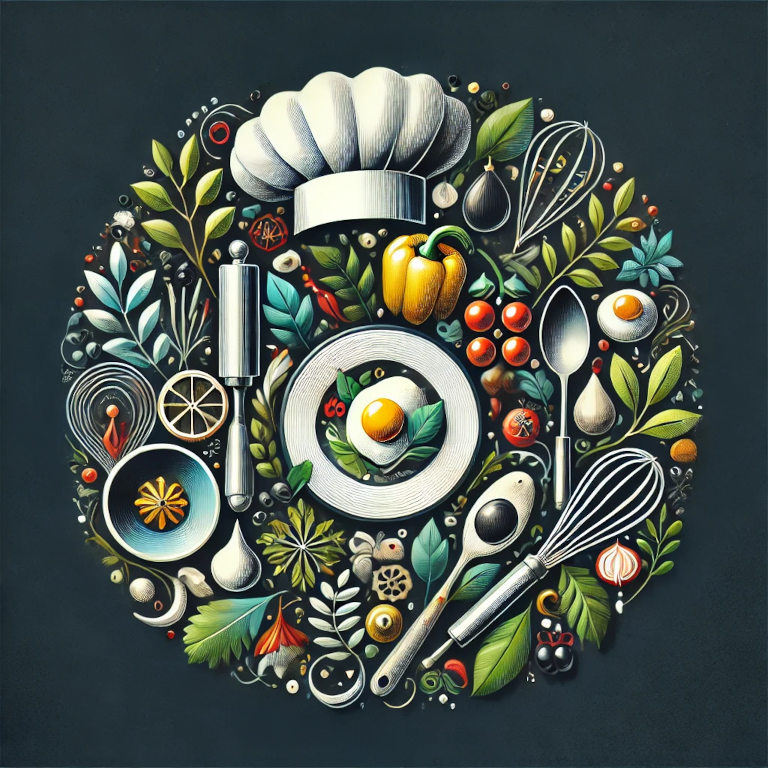The world of Food and Cooking is vast and diverse, encompassing a wide range of skills, techniques, and traditions. At the heart of this domain lies the Culinary Arts, an intricate blend of creativity, science, and culture. As an expert in Food and Cooking, I will delve into the essence of culinary arts, its key components, and how it shapes the culinary landscape. This exploration will provide valuable insights for both aspiring chefs and food enthusiasts.
Understanding Culinary Arts
Culinary arts refer to the practice and skill of preparing, cooking, and presenting food. It is an art form that combines technical proficiency with creativity, resulting in dishes that are not only delicious but also visually appealing. The culinary arts encompass various aspects, including ingredient selection, cooking techniques, flavor development, and presentation.
The Foundations of Culinary Arts
To master the culinary arts, one must understand its foundational elements. These include knowledge of ingredients, mastery of cooking techniques, and the ability to balance flavors.
Ingredients
Ingredients are the building blocks of culinary creations. Understanding the properties, seasonality, and sourcing of ingredients is crucial for creating high-quality dishes. This knowledge allows chefs to select the best ingredients and use them effectively to enhance the flavors and textures of their dishes.
Cooking Techniques
Mastery of cooking techniques is essential for any chef. Techniques such as grilling, roasting, sautéing, and baking each impart unique flavors and textures to food. Advanced techniques like sous-vide, molecular gastronomy, and fermentation further expand the culinary repertoire, allowing chefs to experiment and innovate.
Flavor Development
Flavor development involves combining ingredients and cooking techniques to create balanced and harmonious dishes. This includes understanding the five basic tastes—sweet, salty, sour, bitter, and umami—and how they interact. The use of herbs, spices, and other flavor enhancers also plays a critical role in crafting memorable culinary experiences.
The Role of Creativity in Culinary Arts
Creativity is a defining characteristic of culinary arts. It allows chefs to push boundaries, experiment with new ideas, and create unique dishes. Here are some ways creativity manifests in culinary arts:
Plating and Presentation
The visual appeal of a dish is almost as important as its taste. Plating and presentation involve arranging food in an aesthetically pleasing manner. This can include the use of color, texture, and garnishes to enhance the overall dining experience. Creative presentation can transform a simple dish into a work of art.
Fusion Cuisine
Fusion cuisine blends elements from different culinary traditions to create innovative dishes. This approach allows chefs to experiment with new flavor combinations and cooking techniques, resulting in unique and exciting culinary creations. Examples include combining Asian and Western flavors or integrating traditional and modern cooking methods.
Ingredient Innovation
Chefs often experiment with unconventional ingredients to create new and exciting dishes. This can involve using edible flowers, exotic spices, or lesser-known vegetables. Ingredient innovation expands the culinary landscape and introduces diners to new flavors and textures.
Culinary Education and Training
Pursuing a career in the culinary arts typically involves formal education and training. Culinary schools and programs provide aspiring chefs with the knowledge and skills needed to succeed in the industry. Key components of culinary education include:
Culinary Techniques and Skills
Culinary programs teach students essential cooking techniques and skills, including knife skills, food safety, and kitchen management. These foundational skills are crucial for any chef, regardless of their specialty.
Nutrition and Food Science
Understanding nutrition and food science is important for creating balanced and healthy dishes. Culinary programs often include courses on nutrition, food chemistry, and dietary restrictions, allowing chefs to cater to diverse dietary needs.
Business and Management
Running a successful culinary business requires more than just cooking skills. Culinary programs often include courses on business and management, covering topics such as restaurant operations, marketing, and financial management. This knowledge is essential for chefs who aspire to open their own restaurants or food businesses.
The Evolution of Culinary Arts
The culinary arts are constantly evolving, influenced by cultural trends, technological advancements, and global movements. Here are some current trends shaping the culinary landscape:
Farm-to-Table Movement
The farm-to-table movement emphasizes sourcing ingredients directly from local farms and producers. This approach supports sustainable agriculture, reduces the carbon footprint, and ensures fresh and high-quality ingredients. Many chefs embrace this movement to create dishes that are both environmentally conscious and delicious.
Plant-Based Cuisine
Plant-based cuisine is gaining popularity as more people adopt vegetarian and vegan diets. Chefs are exploring creative ways to use plant-based ingredients to create satisfying and flavorful dishes. This trend is driving innovation in the culinary arts, with new plant-based products and techniques emerging regularly.
Technology in the Kitchen
Technological advancements are transforming the culinary arts. Modern kitchen equipment, such as sous-vide machines and precision cookers, allow for precise control over cooking processes. Additionally, digital tools and apps provide chefs with access to recipes, culinary techniques, and ingredient information, enhancing their creativity and efficiency.
Summary
The culinary arts are a dynamic and multifaceted field that combines technical skill, creativity, and cultural knowledge. From mastering foundational techniques and understanding ingredients to embracing innovation and evolving trends, culinary arts shape the way we experience food. Whether you are an aspiring chef or a food enthusiast, exploring the world of culinary arts can deepen your appreciation for the art and science of cooking. By continuously learning and experimenting, you can elevate your culinary skills and create memorable dining experiences.






